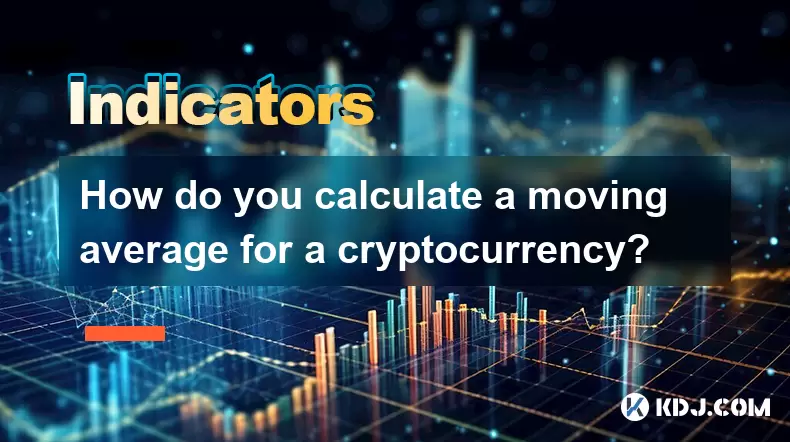-
 Bitcoin
Bitcoin $115100
-1.30% -
 Ethereum
Ethereum $4758
-1.70% -
 XRP
XRP $3.027
-2.19% -
 Tether USDt
Tether USDt $0.9998
-0.01% -
 BNB
BNB $883.2
-1.42% -
 Solana
Solana $204.0
2.62% -
 USDC
USDC $1.000
0.02% -
 Dogecoin
Dogecoin $0.2371
-0.97% -
 TRON
TRON $0.3612
-1.24% -
 Cardano
Cardano $0.9128
-2.19% -
 Chainlink
Chainlink $26.13
-3.93% -
 Hyperliquid
Hyperliquid $44.73
0.90% -
 Sui
Sui $3.715
-0.56% -
 Stellar
Stellar $0.4153
-2.41% -
 Ethena USDe
Ethena USDe $1.000
-0.04% -
 Bitcoin Cash
Bitcoin Cash $588.9
-2.06% -
 Avalanche
Avalanche $25.91
3.27% -
 Hedera
Hedera $0.2525
-1.45% -
 Litecoin
Litecoin $120.9
-1.35% -
 UNUS SED LEO
UNUS SED LEO $9.607
0.30% -
 Toncoin
Toncoin $3.382
-0.31% -
 Shiba Inu
Shiba Inu $0.00001329
-0.38% -
 Uniswap
Uniswap $11.38
-1.67% -
 Polkadot
Polkadot $4.222
2.83% -
 Aave
Aave $354.5
4.93% -
 Dai
Dai $0.0000
0.00% -
 Bitget Token
Bitget Token $4.704
-1.49% -
 Cronos
Cronos $0.1565
1.83% -
 Ethena
Ethena $0.7463
1.55% -
 Monero
Monero $265.8
-0.39%
How do you calculate a moving average for a cryptocurrency?
A moving average smooths crypto price data to identify trends, with SMA giving equal weight to prices and EMA emphasizing recent data for faster signals.
Aug 13, 2025 at 11:35 am

Understanding the Concept of a Moving Average in Cryptocurrency
A moving average (MA) is a widely used technical analysis tool that helps smooth out price data over a specific time period by creating a constantly updated average price. In the context of cryptocurrency trading, this tool is essential for identifying trends, determining potential support and resistance levels, and reducing the noise caused by random price fluctuations. The calculation of a moving average involves taking the average of a cryptocurrency’s closing prices over a defined number of periods. For example, a 7-day moving average would sum up the closing prices of the last 7 days and divide that total by 7. This process is repeated for each new trading period, resulting in a continuously updated line on price charts.
Different Types of Moving Averages Used in Crypto Analysis
There are several types of moving averages used by traders in the cryptocurrency market. The most common are the Simple Moving Average (SMA) and the Exponential Moving Average (EMA). The SMA assigns equal weight to all data points in the selected period. It is calculated by adding the closing prices for a given number of time periods and dividing the sum by the number of periods. The EMA, on the other hand, gives more weight to recent prices, making it more responsive to new information. This responsiveness makes the EMA particularly useful in fast-moving markets like cryptocurrency, where price shifts can occur rapidly due to news, sentiment, or macroeconomic factors.
Step-by-Step Guide to Calculating a Simple Moving Average
To calculate a Simple Moving Average (SMA) for a cryptocurrency such as Bitcoin, follow these steps:
- Collect the closing prices of the cryptocurrency for the desired number of periods (e.g., 10 days).
- Add up all the closing prices from those periods.
- Divide the total sum by the number of periods (in this case, 10).
- The result is the SMA for that period.
- Repeat the process for each new trading day by dropping the oldest price and including the newest one.
For example, if the closing prices of Bitcoin over 5 days are $30,000, $31,000, $29,500, $30,500, and $32,000, the 5-day SMA is calculated as:
($30,000 + $31,000 + $29,500 + $30,500 + $32,000) / 5 = $30,600.
Calculating the Exponential Moving Average with Emphasis on Recent Data
The Exponential Moving Average (EMA) requires a slightly more complex calculation because it incorporates a weighting multiplier to emphasize recent prices. Here’s how to compute it:
- Calculate the SMA for the initial EMA value (this acts as the starting point).
- Determine the smoothing factor (also known as the multiplier), which is calculated as:
(2 / (number of periods + 1)). For a 10-day EMA, this would be (2 / (10 + 1)) = 0.1818. - Use the formula:
EMA = (Current Price – Previous EMA) × Multiplier + Previous EMA. - Apply this formula sequentially for each new data point.
Because the EMA reacts faster to price changes, it is often preferred by short-term traders analyzing cryptocurrency volatility. Traders frequently use EMAs such as the 9-day, 12-day, or 26-day to identify momentum shifts in assets like Ethereum or Solana.
Using Moving Averages on Cryptocurrency Trading Platforms
Most cryptocurrency trading platforms and charting tools, such as TradingView, Binance, or CoinGecko, have built-in moving average indicators. To apply a moving average:
- Open the price chart for the cryptocurrency of interest.
- Locate the "Indicators" or "Studies" menu.
- Search for "Moving Average" and select either SMA or EMA.
- Enter the desired period (e.g., 50, 100, or 200).
- Choose the price type (usually closing price) and color for visualization.
- Click "Apply" to display the moving average line on the chart.
These tools automatically perform the calculations, allowing traders to focus on interpretation. For instance, when the price of a cryptocurrency crosses above its 200-day SMA, it may signal a bullish trend, while a cross below could indicate bearish momentum.
Common Strategies Involving Moving Averages in Crypto Trading
Traders use moving averages in various strategies to generate signals. One popular method is the Moving Average Crossover, where two moving averages (a short-term and a long-term) are plotted together. A buy signal occurs when the shorter MA crosses above the longer MA, known as a golden cross. Conversely, a sell signal appears when the shorter MA crosses below the longer MA, referred to as a death cross. Another strategy involves using a single moving average as a dynamic support or resistance level. If the price remains above the MA, it suggests an uptrend; if it stays below, it indicates a downtrend.
Frequently Asked Questions
How do I choose the right period for a moving average in crypto trading?
The choice of period depends on your trading style. Short-term traders often use 9-day or 20-day moving averages to capture quick trends. Medium-term traders may rely on 50-day MAs, while long-term investors monitor 100-day or 200-day moving averages to assess broader market direction. Higher timeframes reduce noise but may lag in signaling reversals.
Can moving averages predict exact price levels in cryptocurrency markets?
No, moving averages do not predict exact price levels. They are trend-following indicators that help identify the direction and strength of a trend. While they can highlight potential support or resistance zones, they should be combined with other tools like volume analysis or RSI for more accurate decision-making.
What happens when a cryptocurrency’s price touches but doesn’t cross a moving average?
When the price touches a moving average and bounces off it, this often indicates that the MA is acting as a dynamic support or resistance level. For example, in an uptrend, the 50-day SMA may serve as support. If the price approaches it and reverses upward, it reinforces the trend’s strength.
Is the moving average effective for low-cap cryptocurrencies with high volatility?
Moving averages can be used for low-cap cryptos, but their effectiveness may be reduced due to extreme price swings and low liquidity. In such cases, combining MAs with volatility indicators like Bollinger Bands or using longer periods can help filter out false signals.
Disclaimer:info@kdj.com
The information provided is not trading advice. kdj.com does not assume any responsibility for any investments made based on the information provided in this article. Cryptocurrencies are highly volatile and it is highly recommended that you invest with caution after thorough research!
If you believe that the content used on this website infringes your copyright, please contact us immediately (info@kdj.com) and we will delete it promptly.
- XYZVerse, Shiba Inu, and the 2025 Bull Cycle: A Meme Coin Evolution
- 2025-08-24 13:05:12
- WLFI Token, BingX, and the Trading Landscape: A New York Perspective
- 2025-08-24 12:45:20
- Aave, Governance, Allocation: Navigating DeFi's Shifting Sands
- 2025-08-24 12:45:20
- Crypto Coins in 2025: Meme Coins, Undervalued Blockchains, and Bull Run Predictions
- 2025-08-24 13:05:12
- Fed Pivot Ignites Crypto Rally: Altcoins Set to Outperform?
- 2025-08-24 13:25:12
- Eric Trump, Tokyo, and Metaplanet: A Bitcoin Bonanza?
- 2025-08-24 11:05:13
Related knowledge

What does it mean when the +DI and -DI cross frequently in the DMI indicator but the ADX is flattening?
Aug 11,2025 at 03:15am
Understanding the DMI Indicator ComponentsThe Directional Movement Index (DMI) is a technical analysis tool composed of three lines: the +DI (Positive...

What does the sudden appearance of a "dark cloud cover" candlestick pattern during an uptrend indicate?
Aug 13,2025 at 11:35am
Understanding the 'Dark Cloud Cover' Candlestick PatternThe dark cloud cover is a bearish reversal pattern in technical analysis that typically appear...

What does it mean when the moving average, MACD, and RSI all send buy signals simultaneously?
Aug 11,2025 at 01:42pm
Understanding the Convergence of Technical IndicatorsWhen the moving average, MACD, and RSI all generate buy signals at the same time, traders interpr...

What does it mean when both the KDJ indicator and the RSI show overbought signals simultaneously?
Aug 13,2025 at 11:35am
Understanding the KDJ Indicator in Cryptocurrency TradingThe KDJ indicator is a momentum oscillator derived from the Stochastic Oscillator, widely use...

What does it mean when the price is trading above the SAR indicator but the red dots are densely packed?
Aug 09,2025 at 11:49pm
Understanding the SAR Indicator and Its Visual SignalsThe SAR (Parabolic Stop and Reverse) indicator is a technical analysis tool used primarily to de...

What does it mean when the candlestick chart forms a "Morning Star" but trading volume is sluggish?
Aug 12,2025 at 06:28pm
Understanding the Morning Star Candlestick PatternThe Morning Star is a three-candle bullish reversal pattern commonly observed in cryptocurrency pric...

What does it mean when the +DI and -DI cross frequently in the DMI indicator but the ADX is flattening?
Aug 11,2025 at 03:15am
Understanding the DMI Indicator ComponentsThe Directional Movement Index (DMI) is a technical analysis tool composed of three lines: the +DI (Positive...

What does the sudden appearance of a "dark cloud cover" candlestick pattern during an uptrend indicate?
Aug 13,2025 at 11:35am
Understanding the 'Dark Cloud Cover' Candlestick PatternThe dark cloud cover is a bearish reversal pattern in technical analysis that typically appear...

What does it mean when the moving average, MACD, and RSI all send buy signals simultaneously?
Aug 11,2025 at 01:42pm
Understanding the Convergence of Technical IndicatorsWhen the moving average, MACD, and RSI all generate buy signals at the same time, traders interpr...

What does it mean when both the KDJ indicator and the RSI show overbought signals simultaneously?
Aug 13,2025 at 11:35am
Understanding the KDJ Indicator in Cryptocurrency TradingThe KDJ indicator is a momentum oscillator derived from the Stochastic Oscillator, widely use...

What does it mean when the price is trading above the SAR indicator but the red dots are densely packed?
Aug 09,2025 at 11:49pm
Understanding the SAR Indicator and Its Visual SignalsThe SAR (Parabolic Stop and Reverse) indicator is a technical analysis tool used primarily to de...

What does it mean when the candlestick chart forms a "Morning Star" but trading volume is sluggish?
Aug 12,2025 at 06:28pm
Understanding the Morning Star Candlestick PatternThe Morning Star is a three-candle bullish reversal pattern commonly observed in cryptocurrency pric...
See all articles

























































































